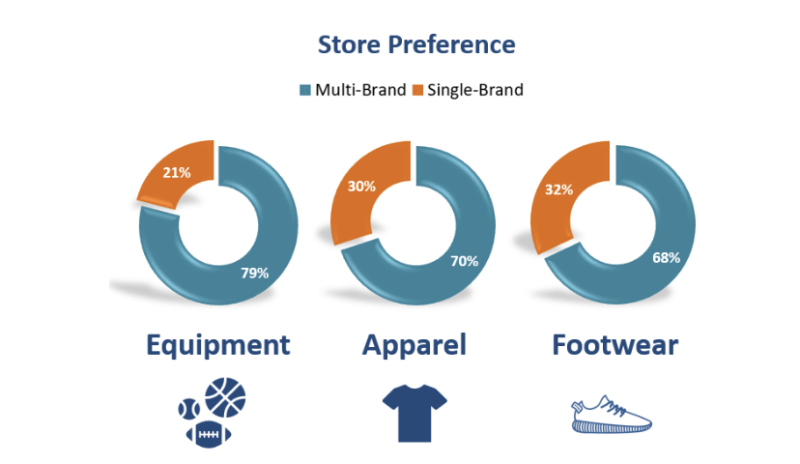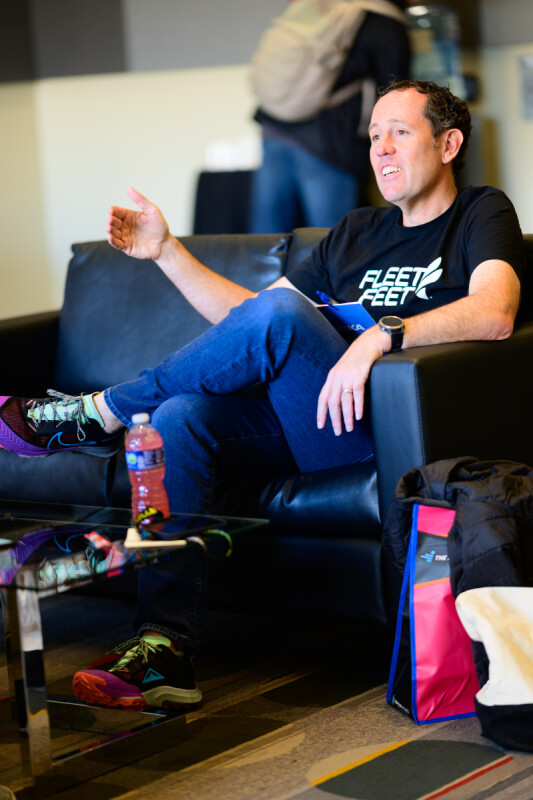The Running Insight Virtual Town Hall got specific this week as the topic turned to the concept and technology behind Virtual Shoe Fitting. With previous sessions having focused on the general impact of the pandemic and the benefits of the CARES Act, this week’s session explored the nuts and bolts of one way many retailers are continuing to communicate with their customers — and hopefully selling a few shoes in the process.
Focusing on the Virtual Shoe Fitting concept, Scott Rakestraw, from Upper Quadrant, moderated and also presented a video from Fitniche that showed the 116 attendees how virtual fitting can work for them.
“People used to think Virtual Fitting was crazy, but now it has sort of become the norm,” Rakestraw said.
Also on the panel were Joe Schultz, Pacers Running (virtual fitting expert); Rich Wills, Fitniche (virtual fitting adopter); Ryan Callahan, Runhouse (social marketing); Lizzy Peper, Charm City (running social marketing); and Melissa Meyers, Upper Quadrant marketing manager.
The feedback from those who are already utilizing Virtual Fitting in their stores was overwhelmingly positive.
“With this new thing your initial reaction if you’re a retailer, is ‘this is going to be weird’ and there’s going to be a lot of friction,” said Callahan. “But since everybody is interacting differently these days people are more open to new processes.”
Wills, from Fitniche, walked the attendees through the process that has achieved some success in their Virtual Fitting process.
- First, they got the whole team together and looked at Upper Quadrant’s process, put their heads together and figured out what our process would look like for them and their clientele. “We’re still fiddling with it, but we feel we have it pretty down in terms of the basic things we are trying to accomplish.”
- Fitniche admittedly struggled initially with how to get an accurate shoe size. After much trial and error, they figured out they customer just had to stand on a ruler and then correlate with the accompanying sizing chart.
- They also went through a struggle getting a scheduling tool that would work. They settled on Simplybook.me, which he described as “a super flexible tool that we can use going forward for more than virtual fittings.”
- They wanted to use Zoom as preferred video chat method, but ended up creating a link from Simplybook.me to Gruveo, while also backing up with Zoom and Facetime and sometimes a simple phone call.
Among the many other highlights of the Virtual Town Hall.
- Pacers has done 25-30 Virtual Fittings in the last two weeks. Charm City reported they have three people on duty Monday-Friday averaging two-three appointments a day.
- Schultz said the typical conversion rate at Pacers is about 80 percent, mostly during the fitting process with a few ordering online later. “”This kind of cuts down on the browsing,” he said. “People are not booking appointments to find out information. They are booking to purchase.”
- Charm City echoed that their conversion rate is also 70-75 percent, including customers ordering from its online store afterwards. “People are very conscious about shopping local and supporting small businesses, so they are appreciative we are offering this service,” Peper said.
- Most stores are scheduling Virtual Fitting appointments for 30 minutes with 15-minute cushion. The average time spent is about 20 minutes.
- Schultz said that the salesperson probably has to make a little stronger recommendation for a particular product that would be best for the customer than he would if it was an in-store process. He typically presents two options because “if you offer three, they get lost in the conversation.”
- The key to promoting Virtual Fitting, Callahan said, is to have very focused messaging. “The fact that we are able to lead with a very strong, focused message and not muck it up with five other things we are doing makes it more effective,” he said. “You want to create communication that is really, really driven — We are offering virtual fittings, here’s what it is, here’s how to schedule it. Your audience now is way more open to new ways of doing things.”
- The marketing message is the same at Charm City, agreed Peper. “Just explaining the process and putting out the messaging to make sure people are informed, but not overdoing it,” she said. “Explain expectations that we are here for you and can answer your questions.”
- Returns have mostly been on the fit side of things. The stores that are offering Virtual Fitting are relying either on curb-side exchange or are sending a shipping label.
Beyond the chance to actually sell a few shoes in this unprecedented retail climate, Virtual Fittings position a run specialty store as a local, expert location that is working hard to serve a clientele that is going through the same challenges they are. The technology is more useful than just for Virtual Fittings.
“This will continue to be a tool that will exist in some format when this is all over,” pointed out Callahan. “This can stick around and, like anything that has come from this, is a really great idea and we will see how it evolves in how we engage with our customers.
“This is something big-box retailers can’t do,” he added. “Even if you sell just a few shoes, it tells them that you have this. This is going to be a moment to buy local and to show your customers that you are here, that you are connecting with them, that you are showing up for your customers and doing something that only local stores can do.”
“We all get into this business because we love running and ultimately we find we all love people,” added Schultz, of Pacers. “We love to talk to people. This is part of our social interaction. Getting that part of the job back has been nice to have.”






